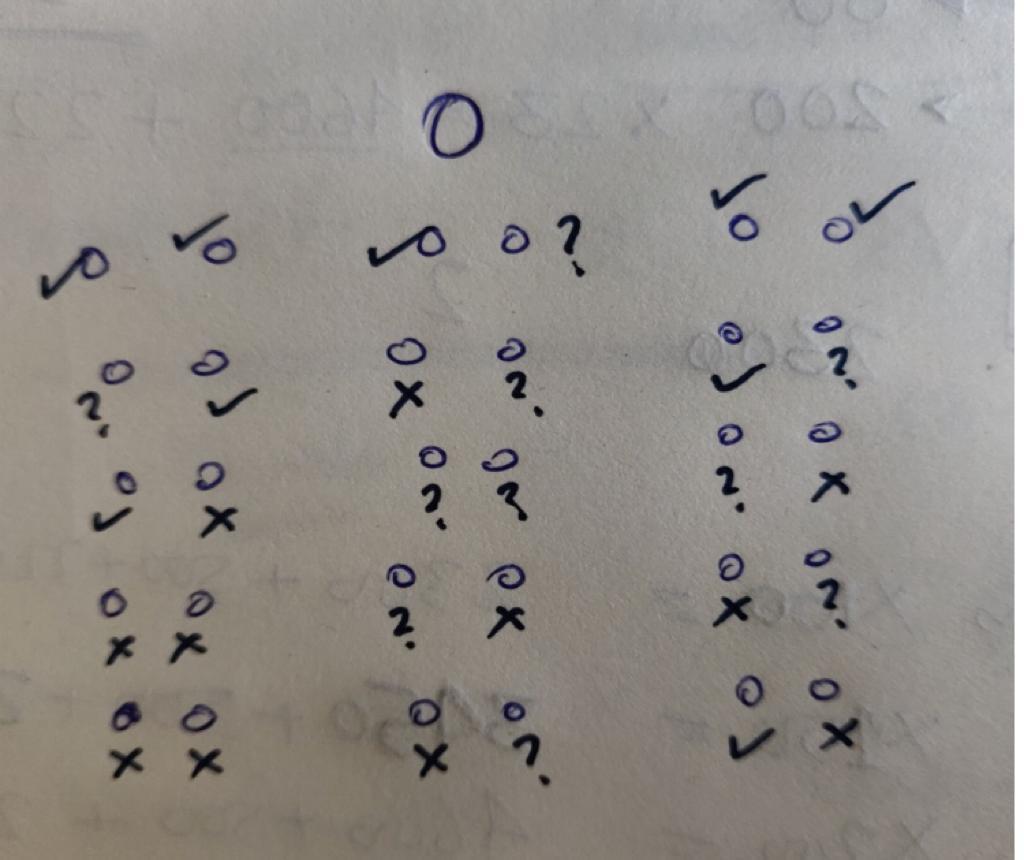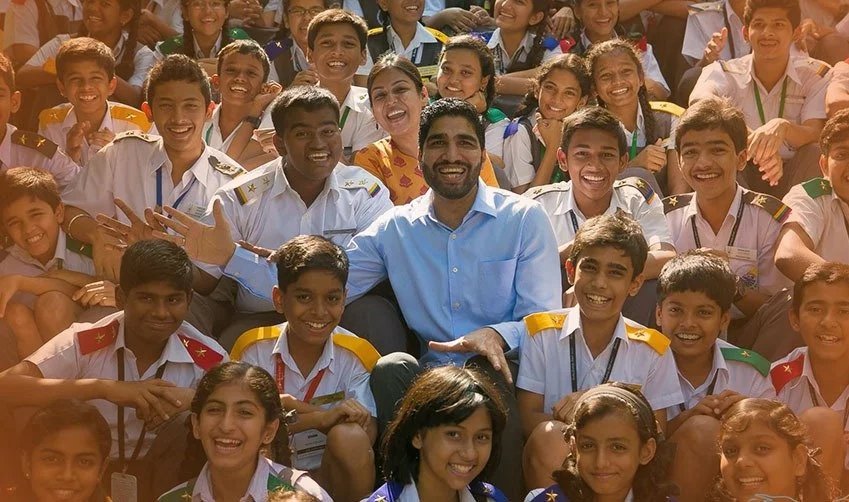Why do some schools fail to meet the needs of their students?
.png)
Give Your School The Lead Advantage
There is comfort in the status quo. The comfort of familiarity and the ease of habit – “This is how things have always been done”. So, perpetuating past practices comes with little risk. No one is going to call you out for continuity. Inertia, or the passive resistance to change, therefore, might be the biggest reason why our schools continue to deliver poor learning outcomes to our students. In this second article, I make a case for transforming our schools from linear factories of ready-for-exam students to learning environments where every child becomes ready for life.
Over the last 15 years, I have witnessed the following scene repeat in tons of schools and classrooms. A teacher stands at the front of the class with a book in hand. She reads a paragraph from the book. She then translates it and explains the text. Students are listening or pretending to listen. The front row students raise their hand at every question. The middle row students are busy needling each other. Someone takes his partner’s eraser. The partner complains, ”Miss, isne mera rubber le liya”. The last row is either staring out of the window or doodling on the table or notebook. Every once in a while, the teacher asks “Have you understood?”. The students either mindlessly say, “Yes, Ma’am!” or stay silent. Both the response or the lack of it, are considered affirmations that learning has taken place. My notes from such classes are in the form of a class map. It normally looks like this:

There are 1.5 million schools in India where 260 million students go to learn for 6 hours each day. Out of them, the 1 million Govt schools are in an even worse shape than what’s described above. In these schools, either the teacher is absent from class or at best, has written a few words on the board that the students are expected to copy in their notebook. The scene I described above plays out unfailingly in the remaining 0.49 million private schools.
Contrast this with schools in some of the higher-ranked PISA countries or the top 2 thousand schools in India itself, where excellent learning takes place. I have had the good fortune of visiting these schools and observing classes. First, the classroom itself looks different. It is not designed for lectures. It is designed for multi-modal learning. No more podium or front space for the teacher to stand and deliver. Benches are not arranged in rows or columns – an arrangement suited for listening to lectures. They are arranged in clusters and are movable – an arrangement suited for different modes of learning, whether group discussions or individual work. Walls have a Smart TV or SmartBoard/Projector along with a blackboard for visual learning. There are racks on the side with teaching-learning materials for kinesthetic learning. The design of the learning environment impacts the quality of learning but most of our schools, unfortunately, are designed with an outdated imagination.
In the top schools, I have visited, teachers and students participate together in the learning process. It is not a one-way street. There are times when the teacher is leading, at other times, students are engaged in group work, and at still other times, students are engaged in individual practice. Even when the teacher is leading, she is not doing it via a lecture. She is using different modes – visual, kinesthetic and auditory – to ensure the concept is well understood. These different modes allow learning to move from a one-to-many lecture to a step-by-step process that moves from one-to-many to one-to-one. Students are engaged, they are participating and the atmosphere of the classroom is of a shared learning space.
These top schools are run differently. They don’t follow the linear teach-test-report approach that is followed by most schools. The linear approach carries an illusion that just because a teacher has delivered a lecture, all students in attendance have understood. But we know that without a check for understanding, there is at best an illusion of learning. In the linear approach, the purpose of testing is to report where a student stands. Students take a test and get a score. And then they move on to the next unit or next class. The test score is seen as a measure of how good a student is. But in the top schools, exam scores are used in the same manner as a doctor uses the thermometer – to check the temperature and diagnose the problem. Tests are followed by analysis and analysis is followed by remedial. Without a remedial loop to cover learning gaps, we are just compounding gaps from one exam to another. This compounding of gaps is another practice that continues unexamined in most schools and wreaks havoc with student learning.
{% video_player “embed_player” overrideable=False, type=’scriptV4′, hide_playlist=True, viral_sharing=False, embed_button=False, autoplay=False, hidden_controls=False, loop=False, muted=False, full_width=False, width=’410′, height=’410′, player_id=’43570601809′, style=’max-width: 410px; margin: 6px 10px 10px 0px; width: 100%; display: block; float: left;’ %}
Lastly, let’s look at resources. In most schools, textbooks are still considered the sole anchor of learning. But in good schools, books are at best a reference point for learning. The anchor is the learning plan that the teacher makes for her class. It includes videos, reading material, presentations, activities and conclusive text. While in our adult life, we have embraced multiple ways of getting information, I wonder why in schools we remain tethered to the textbook. The only explanation seems to be that it is our old unexamined habit that we are perpetuating to the detriment of our children.
Making the book the sole anchor of teaching-learning has another unintended consequence. It forces two people of very different ability to use the same material. On one hand is the teacher who is a post-graduate adult, with a deep understanding of the text and material. And on the other hand, is the student who has just climbed to this new rung of the learning ladder. Since textbooks are chosen by teacher committees, they have over the years become more and more complex to impress teachers. In the process, they have become more and more inaccessible to students.
These old practices of lecture-based teaching, linear schooling and books as sole anchors of learning, come together to create a system that perpetuates the status quo. Students continue to go through the same process of teach-test-report and keep moving from one class to another. Along the way, they take exams where they merely regurgitate the answers written on the blackboard by their teacher and dutifully copied by them. And what we get are students who are ready for exams but not ready for life. A recent survey of Board toppers by Indian Express eloquently captured this when a student said, “I wished my school had prepared me for life. There was more connection to life and less emphasis on rote.”
Most school owners are well-intentioned. They think they are doing the best for their students when they look for old consultants to design their schools, choose old textbooks and get started. They hire experienced teachers thinking that’ll give them the right outcomes. But the pace of innovation in education has left many experienced practitioners stuck in practices of the past. Neuroscience is telling us how the brain works. Human development research is telling us how human beings learn. Technology and Future of Work studies are telling us that mindsets and skills are more important than knowledge in a fast-evolving world. Higher education and future jobs are evolving at an unprecedented rate.
In such a scenario, it is important for schools to plug into networks of innovation that help them ride this change successfully. These networks provide a central hub of research and development that an individual school can’t afford by itself. Being part of such a network gives schools access to the latest in curriculum, pedagogy, design and technology. When we began partnering with schools around the country, we started creating this network and now it is 2000+ schools strong. Schools that are powered by LEAD have 5 unique aspects that ensure teaching-learning is at the level of the top schools in the world:
- Learning environment is designed for multi-modal learning
- Curriculum and pedagogy enable multi-modal learning
- School system becomes spiral with remediation following assessments
- The anchor of learning is no longer the book. It is the learning plan
- Students build mindsets and skills that make them ready for future
These 5 elements of the LEAD system ensure that learning outcomes are high, every student is able to make progress and progress is not only on knowledge but also on skills and mindsets. There is no doubt that this system works. The question is whether our schools are ready to embrace change. My sincere call to schools is to unshackle themselves from the chains of status quo. Because if we have to prepare our students for the future, we cannot use systems that are stuck in the past!
LEAD is transforming schools by making children future-ready. To make yours a LEAD Powered School: Partner with us today

-page-002.jpg)
.png)

